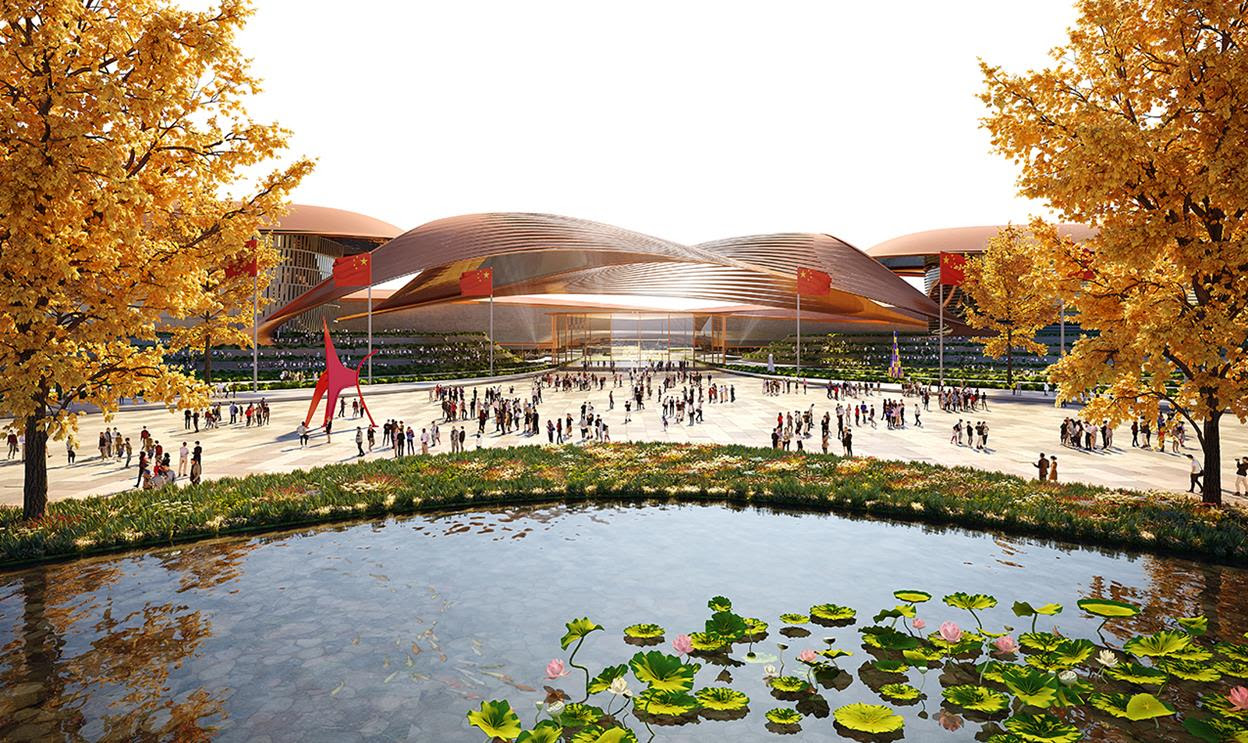
Zaha Hadid Architects announced winner of the design competition to build Phase II of the International Exhibition Centre in Beijing.
As the cultural, academic and civic centre of China, Beijing has also developed into one of the world’s centres of communication and scientific research. With its own station on Line 15 of the Beijing Subway, the International Exhibition Centre is located next to the city’s Capital International Airport and has grown to become an important venue for conferences, trade fairs and industry expos attended by delegates from across the globe.
Meeting this growth, the International Exhibition Centre’s new 438,500 sq.m Phase II by Zaha Hadid Architects will significantly expand its exhibition space, enhancing the city’s position as a leading centre of knowledge and international exchange. Located at the core of the International Airport New City in Beijing’s Shunyi District, the centre will welcome local residents as well as visitors from across China and around the world to its comprehensive programme of events.
The integrated relationships between the exhibition halls, conference centre and hotel are echoed in the centre’s composition, arranged as a series of interconnecting lines and geometries that take inspiration from the textures of glazed tubular ceramic tile roofs within traditional Chinese architecture; its copper colour and large recessed windows give further expression to the visually dynamic envelope.
A central north-south axis is the primary connecting space between the east and west exhibition halls; providing functional clarity, maximum flexibility and efficiency as well as defining shared courtyards for informal meetings and relaxation in landscaped gardens, cafes and outdoor public event spaces. Secondary bridges at higher levels add a further layer of connectivity between the centre’s network of facilities.
With its conference centre and hotel located to the north of the site, the movement of people, goods and vehicles throughout the centre is divided into three separate routes to aid circulation, provide optimal adaptability and avoid disruption to ongoing events.
A composite roof system is designed to insulate the interior environment and provide maximum sound absorption. The roof’s symmetric geometries create an efficient lightweight large span structure to provide a column free flexible space that can quickly adapt to changes in exhibitions and nature of use; its industrial materiality and scale balanced with its fluid architectural language. Modular fabrication and construction methods will minimize the centre’s construction time, investment and operational costs.
Solar arrays will harvest renewable energy while a smart building management system will adjust the centre’s hybrid ventilation as required, ensuring optimum natural ventilation supported when necessary by high efficiency HVAC equipment to enhance indoor air quality and further reduce electricity demand. Rainwater collection and grey water recycling will complement the extensive gardens and natural landscaping, while advancements in sustainable building technologies will target minimum embodied carbon and emissions.
Source : Company
 Le mie ricette per la real estate community
Le mie ricette per la real estate community